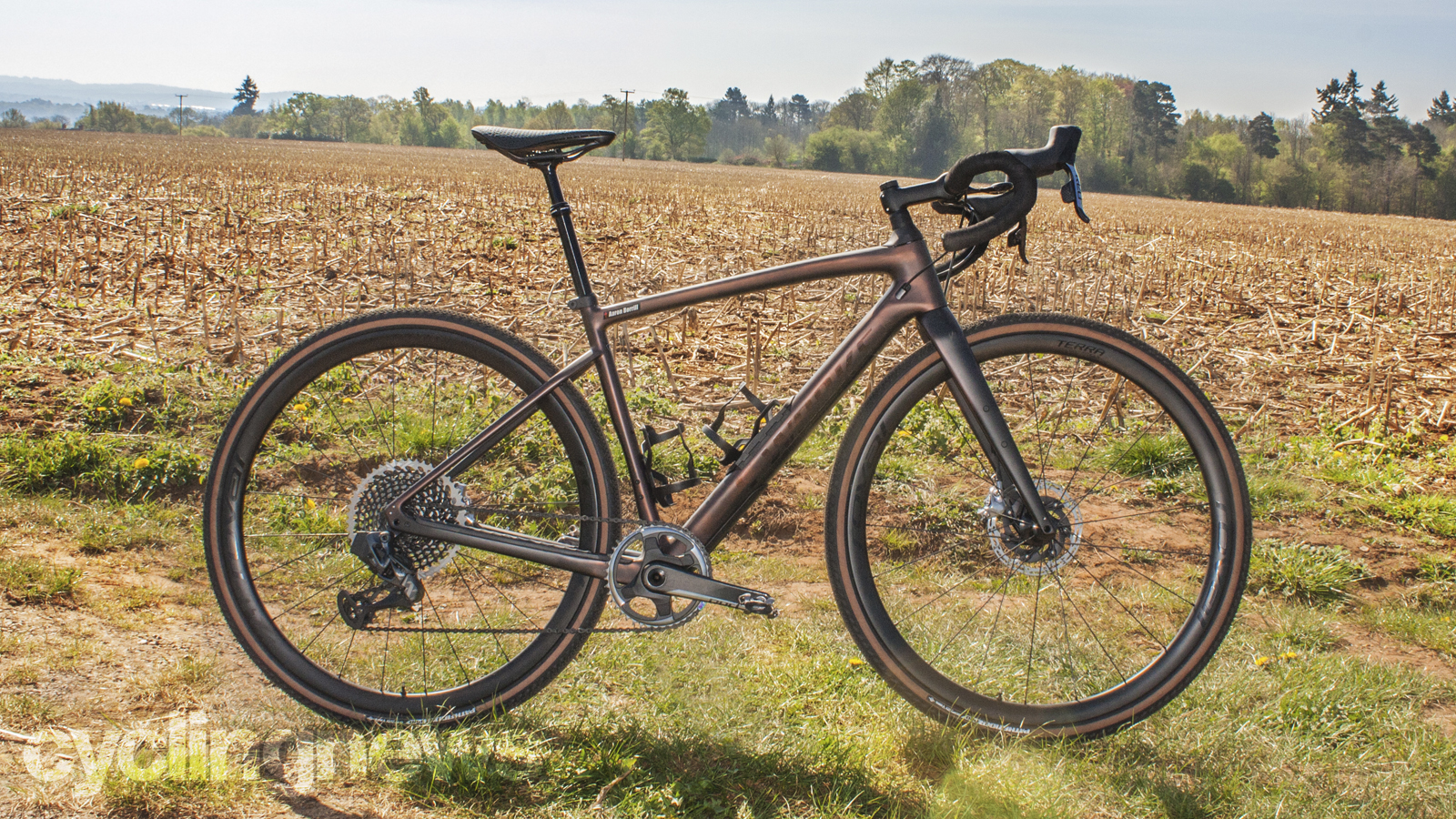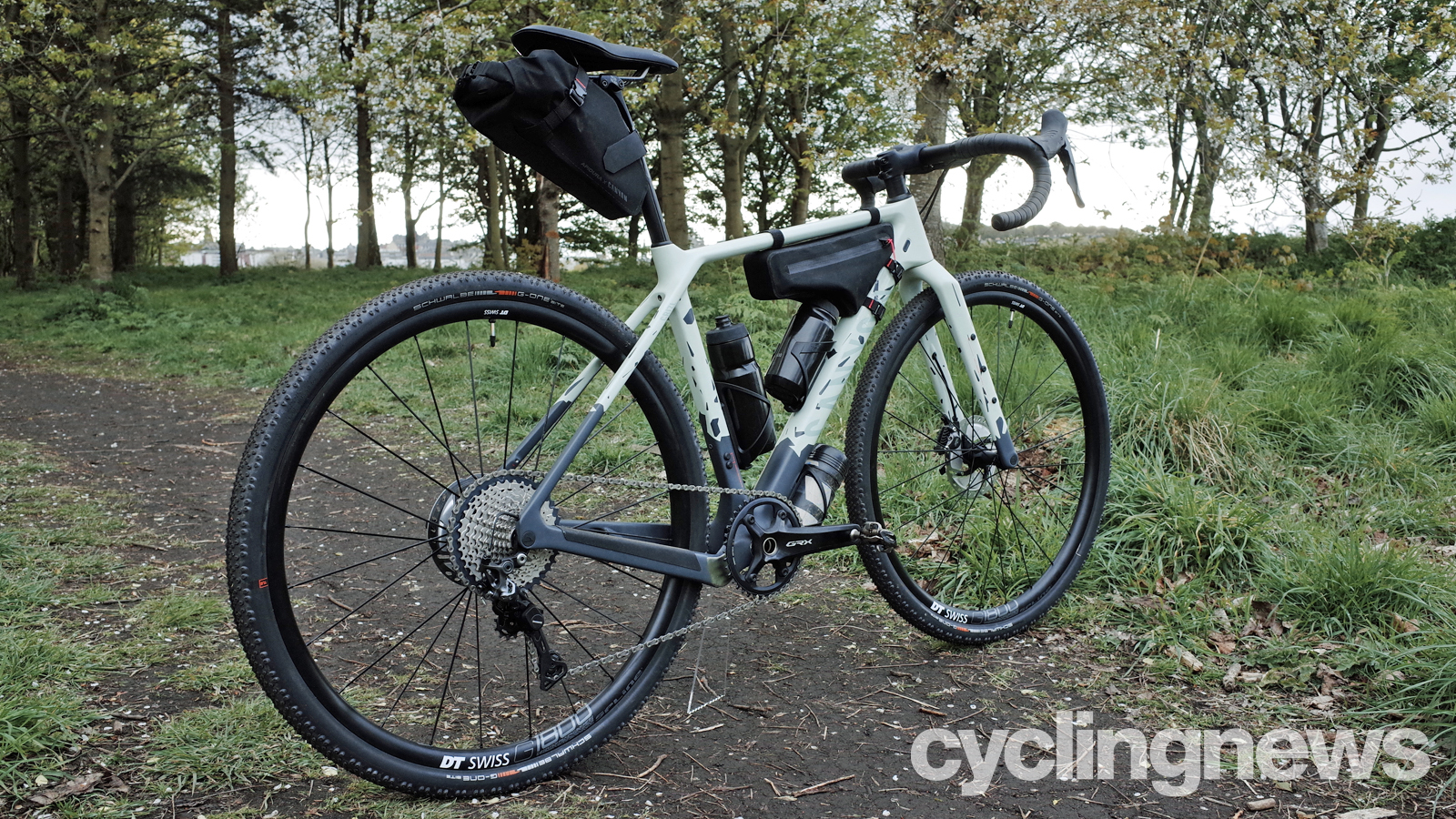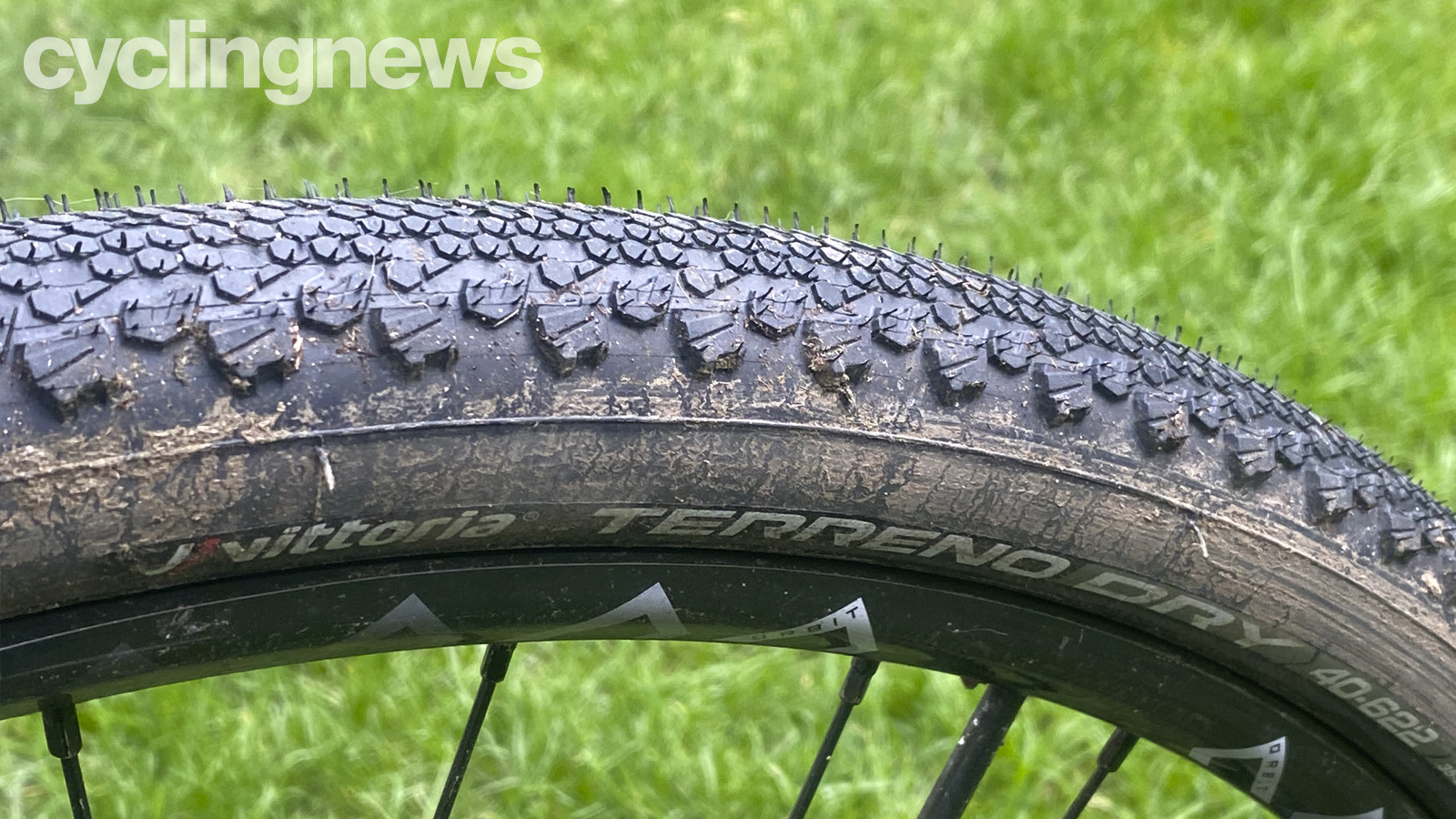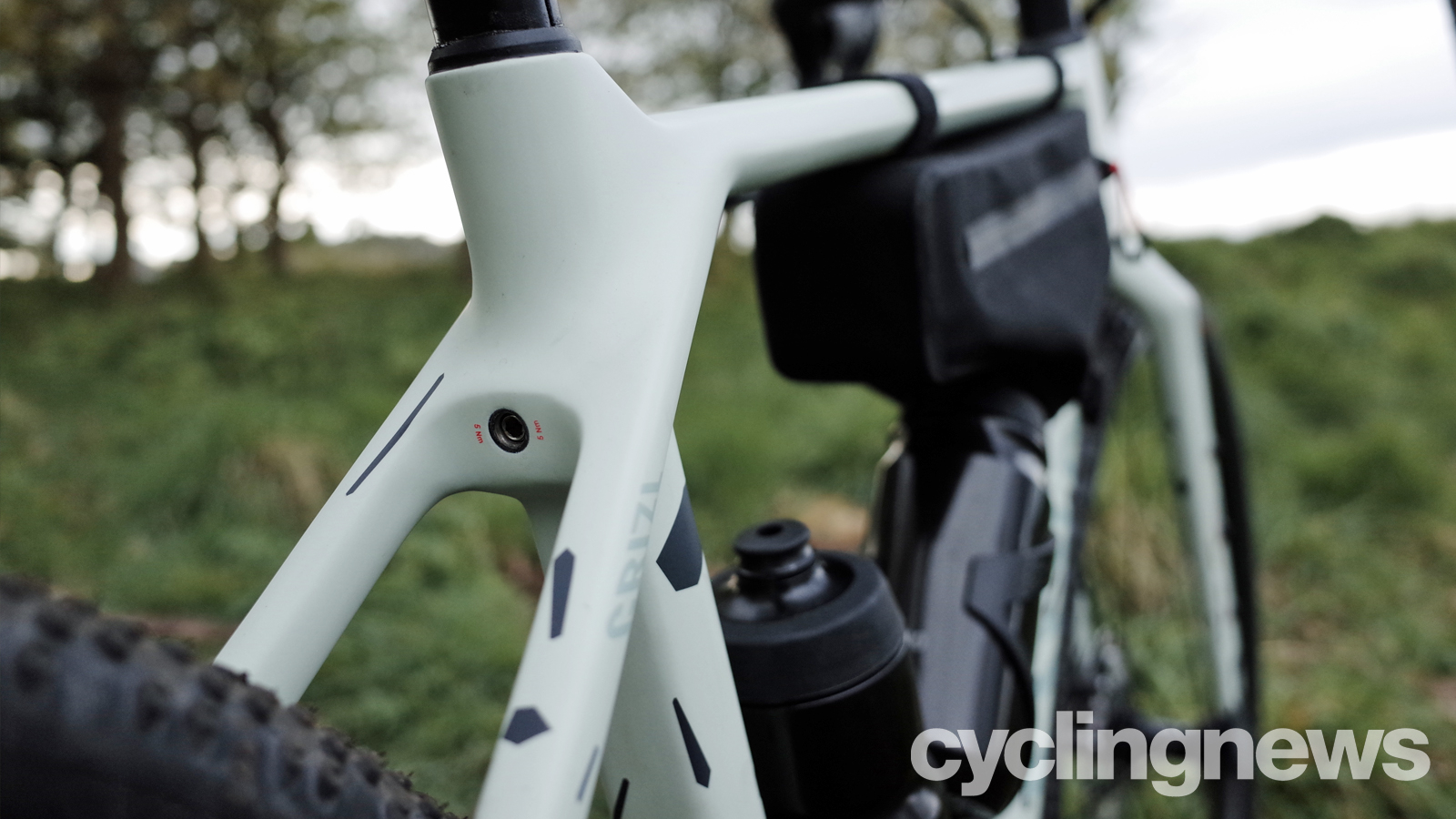What is a gravel bike?
Everything you need to know about the bikes that have taken the cycling world by storm

Take a cyclo-cross bike, a mountain bike, and a road bike, mash them all together and you get the almighty gravel bike.
Modern-day gravel bikes are designed for off-road riding. Everything from soft sand to chunky gravel and tame singletrack is included, with an extra emphasis on comfort and handling, thanks to wide tyres and relaxed geometry. In this article, we’ll dive into the ins and outs of gravel bikes, and see what makes them a truly unique addition to the cycling world.
Some argue that gravel bikes aren’t even necessary, that a cyclo-cross bike could accomplish the same things, but that’s an argument we've already covered in depth in our cyclo-cross vs gravel bikes article. Gravel bikes share many key features from both types of bikes, but also remove the ones they don’t need.

Purpose of a gravel bike
Gravel bikes are meant for all sorts of on-road and off-road riding. They are designed to be quick on the tarmac, but also capable of handling technical off-road descents and narrow singletrack. The versatility of a gravel bike makes it ideal for long endurance rides, variable terrain, and even bikepacking. On a gravel bike, you can link together different surfaces, trails, and routes, all in one ride. The drop bars and frame geometry of a gravel bike make it fast on flat surfaces, including tarmac.
Every gravel bike is unique, and some brands tend towards adventure rather than speed. Some manufacturers build light and agile gravel bikes meant for racing, while others are somewhere in between. When it comes to gravel bikes, there are few limits to what you can accomplish. Let’s dive into the details, and take a closer look at the design and capabilities of a gravel bike.
Frame
A gravel frame tends to be significantly heavier than most road bike frames, which not only increases its durability, but also provides extra support for accessories, mudguards, or luggage.
Gravel bikes are typically made from aluminium, steel or carbon, just like most bikes in the industry. Aluminium frames are significantly cheaper than carbon frames, while also being durable and lightweight. Steel frames are heavier than aluminium and carbon, but provide the most comfort and durability of the three, making them well-suited to bikepacking.
Meanwhile, carbon frames tend to be the lightest, and are often designed as speed machines of gravel. Some frames are even branded as an ‘aero gravel bike,’ for those off-road riders valuing performance and speed.
Whichever material you opt for, make sure it suits your style of riding. If you’re racing off-road or favour speed and performance, then it’s important for the frame to be stiff, durable, and lightweight, because of the variety of terrain that it can handle. You won’t want to lug a heavy frame up a steep gradient at full pelt, or be worried about your carbon frame holding up on a rocky descent.
On the other hand, if you’re more interested in loading up and lugging your belongings over long distances in the wilderness, you might be willing to compromise on weight and prefer a heavier but supple steel frame that can carry larger loads and soak up some of the bumps in the terrain.
Geometry
At first glance, a gravel bike looks a lot like a road bike with wider tyres, but gravel bikes are designed for off-road comfort, stability, and handling, whereas road frames are more focused on performance and speed. Because you’ll be taking your gravel bike off-road, and maybe hitting some gnarly trails or bumpy gravel sections, you’ll want a bike that is comfortable and stable, that you won’t have to fight over the rough surfaces.
In terms of bike geometry, gravel bikes typically have longer wheelbases and slacker head tube angles compared to road bikes – this makes the bike more stable over technical terrain and through corners. The slack head tube angle helps a gravel bike handle better at slower speeds, and remove the twitchy feeling that some road or cyclo-cross bikes have.
- What size bike do I need? A comprehensive bike size guide
Don’t let the drop bars fool you: a gravel bike won’t – and shouldn’t – fit like a road bike. A gravel bike will have a much more relaxed, upright position, partly due to the slacker fork angle, but also because of a longer head tube and shorter reach. You won’t see riders with their back flat and forearms on the hoods while riding their gravel bike.
In this more upright position, you will be more comfortable on long rides with your gravel bike, and better able to shift your centre of gravity over technical sections and descents. There are also gravel bikes out there designed for heavy off-road riding and super technical terrain. These are best for bikepacking and true adventure rides, and often come with flat or flared bars instead of drops, and super-wide tyres.
Gravel bike frames and forks are also designed to leave extra space for wide tyres, as well as the mud and road grime they collect.

Tyres
The best gravel tyres come in a wide variety of shapes and sizes – everything from 28mm to 47mm will fit on most gravel frames, and they come in every tread from slick to mountain bike-esque. Most gravel tyres are around 40mm wide, making them much wider than classic road tyres, more puncture resistant, and off-road capable.
Wide tyres also mean that you can (and should) ride with lower tyre pressure, often just 30-50psi. Even on tarmac, gravel bikes are much faster than mountain bikes, and even some cyclo-cross bikes, which makes gravel bikes ideal for mixed-terrain rides on both tarmac and gravel.
There are as many treads available as there are tyres, and you can find exactly what you need for everything from smooth tarmac and light gravel, to muddy trails and wet descents.
Most gravel bike tyres are tubeless, which means they don’t have an inner tube, and hold air using sealant instead. The bead of the tyre seats tightly onto the rim, and without an inner tube, you won’t need to worry about pinch flats. Tubeless tyres are also more resistant to punctures because their sealant will actually seal small cuts made by rocks, thorns, or other sharp objects. This also contributes to your ability to run lower tyre pressures.
Brakes
It is very difficult, if not impossible, to find a gravel bike without disc brakes. In fact, the invention of hydraulic disc brakes in the hoods of drop bars was a key advent in the history of gravel bikes.
Not only do disc brakes offer more stopping power, effective modulation, and performance in variable weather conditions compared to rim brakes, but they also leave extra room for wide tyres.
Wheels
Most gravel bikes come with 700c wheels, which makes for the best all-round option in terms of comfort and performance. However, some gravel bikes come with 650b tyres which have a small diameter, and can fit wider tyres than 700c wheels.
650b tyres are generally better for off-road riding because of the wider tyres they can take, which give them more traction on rough surfaces. They’re also a great choice for shorter riders and tend to come specced on small and extra small frames as standard, in order to keep proportions consistent.
- Best gravel wheels: Our pick of the best gravel bike wheels for racing and adventure riding
Gearing
Like in cyclo-cross, there is a pretty heated debate in gravel between 1x and 2x gearing set-ups. With 1x, you can decrease your chances of a dropped chain, and save weight and complication by omitting the front derailleur. It used to be that a 1x severely limited your gearing options, but with 12- and 13-speed cassettes and ‘dinner plate’ sprockets available from multiple manufacturers, you can still get a wide gearing range for steep gravel terrain.
With a 1x chainring, you’ll be stuck with fewer gears to choose from, and thus, bigger jumps between gears. For riders who prefer specific cadences, a 1x set-up might not be the right fit.
2x set-ups are common on gravel bikes as well, often with a slightly smaller pairing than a comparable road bike. The classic road bike has a 53/39t in the front, whereas a gravel bike is more likely to have a compact chainring, such as a 50/34t or smaller.
Many gravel routes include steep, slippery, and technical climbs, which means that low gearing is a must. Especially on off-road ascents, it is often better to stay in the saddle to prevent wheel slip, which is all the more reason to have a bigger range of gearing.
So, what makes a gravel bike a gravel bike?
Many gravel bikes include features not seen on mountain, road, or cyclo-cross bikes. While they share drop bars with their road bike cousins, some gravel bikes have drops that flare out to either side. It’s the opposite of aero, but the flared drops can help improve handling, and provide more stability, especially on technical off-road terrain.

Bikepacking-themed gravel bikes will often also have built-in mounts for mudguards and front and rear racks, and might even have mounts for a third bottle cage under the downtube, or mounts for a top tube bag for extra accessories and storage.
While not common on gravel bikes (yet), some include suspension, either at the seatpost, built into the seat stays, or even in the fork.
Cyclo-cross bikes share a lot of the same features as gravel bikes, but they’re designed for short and intense hours of racing, not long, 100-mile rides or multi-day adventures. As such, cyclo-cross bikes have a much shorter wheelbase and are built for quick handling rather than comfort. Plus, they can only fit up to 33mm tyres (per UCI racing rules – many CX bikes can fit 35mm or 38mm tyres), and won’t come with the extra features or mounts like many gravel bikes.
In the end, gravel bikes are all about high performance on a variety of on and off-road surfaces, without sacrificing the comfort and convenience that makes them ideal for long endurance rides and bikepacking adventures.
Check out our roundup of the best across various price points by using the links below.
- Best gravel bikes: Fun and fast adventure bikes for your next off-road ride
- Best women's gravel bikes: Ultimate adventure bikes to take you off the beaten track
- Best electric gravel bikes: our pick of the best bikes for assisted off-road adventures
- Best budget gravel bikes: Gravel grinding without breaking the bank
- Best gravel bikes under £1,000
- Best gravel bikes under £2,000
- Best entry-level gravel bikes: Fantastic first-time adventure bikes
Get The Leadout Newsletter
The latest race content, interviews, features, reviews and expert buying guides, direct to your inbox!
Zach is a freelance writer, the head of ZNehr Coaching, and an elite-level rider in road, track, and e-racing. He writes about everything cycling-related, from buyer's guides to product reviews and feature articles to power analyses. After earning a Bachelor’s Degree in Exercise Science at Marian University-Indianapolis, Zach discovered a passion for writing that soon turned into a full-fledged career. In between articles, Zach spends his time working with endurance athletes of all abilities and ages at ZNehr Coaching. After entering the sport at age 17, Zach went on to have a wonderful road racing career that included winning the 2017 Collegiate National Time Trial Championships and a 9th place finish at the 2019 US Pro National Time Trial Championships. Nowadays, Zach spends most of his ride time indoors with NeXT eSport.